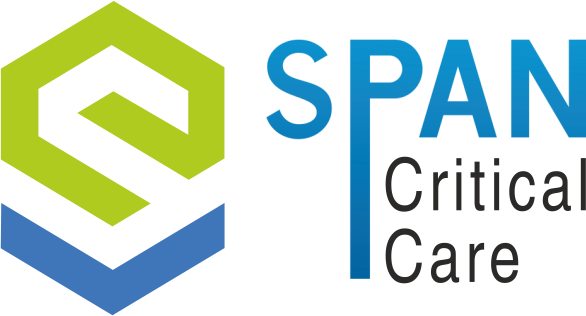Our TeleICU services and its need in today’s times to bridge the gap between healthcare centres not having proper intensive care specialists and its services to treat critical care patients with the help of networking and high end software integration of hospitals to our command centres.
TeleIntensivists can run codes, talk to the care team through procedures, as well as speak directly to patients and/or their families to help with difficult care decisions. There is a huge shortage of Intensivists and using a teleICU platform can address that shortage. Furthermore, utilizing a teleICU can help hospitals optimally staff their ICUs and optimize resource utilization while ensuring their patients have the highest quality of care.
About
TELEICU
There is a vast gap in quality healthcare expertise between rural and urban areas. Typically, over 70% of India’s population resides in rural and semi-urban areas; thereby creating a vast demand for care of critically ill patients in these areas. To make matters worse, the number of Intensivists in these areas is deficient. Today, we do witness a reasonable amount of healthcare expansion up to semi-urban areas with small hospitals growing, but unfortunately, there is a shortage of specialist doctors who treat critically ill patients. Here, technology is used as an enabler to connect, monitor, and treat patients in remote locations, increasing doctor’s efficiency, minimizing patient movements, and their financial constraints. Tele- ICU has t h e potential to link all semi-urban/urban hospitals to Tertiary care ICUs and improve the ICU services of these remote hospitals, thus, ensuring better care and services to these communities. Span Hospitals is connecting hospital ICUs to that of its own Tertiary Care hospitals. Similarly, it is connecting other smaller hospital ICUs to SPAN Tertiary Care Hospital ICUs in an endeavour is to provide better Intensive Care to patients by supporting the doctors at the point of care.
- What is teleICU?
- How does teleICU work?
- Why is the use of teleICU use growing?
- What is the Benefits of teleICU
- TeleICU is not just used in the ICU
- What is remote ICU monitoring or eICU?
- Conclusion
TeleICU, also known as eICU, is the diagnosis and treatment of the most critical hospital patients by a remote intensivist using technology like videoconferencing. It makes it possible for hospitals to have access to critical care specialists in the ICU, Emergency Room or Med/Surg floors and be connected face-to-face in minutes.
Intensivists specialize in unstable and critical patients with unpredictable medical prognoses interacting with virtually every facet of a hospital. Similar to emergency department physicians and hospitalists, intensivists are an integral component of acute care telemedicine.
TeleICU is very much like a typical ICU workflow―the difference is that the critical care physician is remote. Like other hospital ICU physicians, teleIntensivists begin each shift by rounding with the patient care team and discussing each patient, classifying them by acuity:
1. Patients with acute needs that have potential issues and challenges
2. Patients that can be downgraded or transferred out of the ICU
3. Patients in the “grey area” where the trajectory of the illness is less clear
Those patients identified with potential problems or increased acuity due to their diagnoses and progressing illness can be escalated for a full in-depth evaluation by the teleIntensivist and on-site care teams. The goal is to proactively assess and treat patients before decompensation occurs.
When an emergency occurs in the ICU, the patient care team can request a consult (similar to paging a doctor who may be elsewhere in the hospital.) TeleIntensivists can run codes, talk the care team through procedures, as well as speak directly to patients and/or their families to help with difficult care decisions.
For many organizations, finding nighttime coverage is a challenge. Some teleIntensivists specialize as nocturnalists, and support the on-site clinical team and cover the ICU overnight.
There are several reasons that the use of teleICU is growing:
- Physician shortages make it hard to recruit enough intensivists to staff appropriately.
- An aging population means that there is more demand for services.
- The COVID-19 pandemic has highlighted the need to protect providers so that they
can avoid exposure and continue to treat patients - With high demand, and not enough supply, physicians experience burnout trying to
make up the gap. - Rapid acceleration of the adoption of technology, like mobile phones, means
consumers expect more convenience in their healthcare.
Even if a hospital has intensivists on staff, supplemental teleICU coverage can offload some
of their work, allowing them to gain visibility into what is happening across the hospital and
leverage their own skillset more broadly.
- Access to board-certified US trained intensivists to assist with clinically complex
patients anywhere in hospital - Earlier interventions for critically ill patients
- Increased awareness of high acuity patients for proactive monitoring
- Improved care quality and compliance with core metrics
- Protocol-driven best practices of care
- Support for ED staff with difficult admit vs transfer decisions
- More timely discharges from the ICU unit
- Decreased ventilator days
- Can help hospitals achieve and maintain The Leapfrog Group’s quality and safety
standards.
There are multiple use cases in hospitals for teleICU.
- In the emergency room, remote specialists can “beam in” to consult with the emergency department onsite staff to determine whether the patient should be moved to the ICU.
- In the ICU, a teleIntensivist can provide expertise to onsite staff regarding care plans for critically-ill patients.
- Telemedicine can be used with admitted patients who become more critically-ill, as well with those who have complications from surgery.
Remote ICU monitoring, also known as eICU, utilizes technology to monitor patient status and exchange that information in real-time to an off-site command center (or bunker) with a critical care team. ICU beds are wired so that patient information can be relayed, and alarms triggered for the onsite staff. Some remote ICU monitoring companies offer rounding by intensivists or critical care nurses, while others are only supplemental oversight. Remote ICU monitoring is more expensive than teleICU as defined above.
TeleICU is a cost-effective way to connect intensivists with the hospitals who need them to treat their most critical patients. With the shortage of intensivists nationwide, teleICU allows hospitals to provide access to these highly-trained specialists to their most critically-ill patients. Learn more about teleICU with the resources below.

Get in touch
Address
Call us
9924871146
Write us
Frequentlyasked questions
- What are Vision Screenings?
- Are children’s vision screenings helpful?
- Passing a vision screening
- Do adults need more frequent eye exams?
Vision screenings are not comprehensive eye exams. Screenings usually take only a few minutes and are often performed by volunteers who are not eye care professionals.
In many cases, vision screenings are nothing more than a visual acuity test where you’re asked to identify the smallest letters you can on a vision chart across the room.
Vision screenings typically are designed to only detect subnormal visual acuity and major vision problems — as quickly and cost-effectively as possible. They generally are ineffective for detecting more subtle vision problems and potentially sight-robbing eye diseases.
People who fail a vision screening (usually because their visual acuity is worse than 20/40) are made aware of this and are encouraged to visit an eye doctor so they can have their vision problem professionally diagnosed and treated with eyeglasses, contact lenses, medicine or surgery.
Good vision is essential for children to reach their full academic potential. It’s been widely stated that roughly 80 percent of what children learn in school is presented visually, and vision problems can have a profound effect on learning.
According to the American Optometric Association, an estimated 20 percent of preschool children have vision problems. Other research shows that 24 percent of adolescents with correctable refractive errors (nearsightedness, farsightedness and/or astigmatism) don’t have their vision fully corrected with up-to-date prescription eyeglasses or contact lenses.
Even if your child passes a school vision screening, it doesn’t guarantee he or she has perfect vision or has all the required visual skills needed for optimum performance in the classroom.
In fact, a number of studies have identified significant challenges and shortcomings of children’s vision screenings, including:
- Children with significant learning-related vision problems being able to pass simple school vision screenings
- Poor consistency of screening results among different volunteers conducting the testing
- Parents being unaware their child failed a vision screening
- Lack of follow-up to make sure children who fail screening actually have an eye exam
- Also, poor standardization of vision screening standards among different states and lack of reporting requirements make it impossible to adequately evaluate the effectiveness of school vision screenings.
On the other end of the age spectrum, many older Americans often forgo routine eye exams and falsely believe that free vision screenings offer adequate monitoring and protection of their eyesight.
This is extremely dangerous, since the most common causes of blindness — glaucoma, diabetic retinopathy and macular degeneration — increase with age. Vision loss often can be prevented or reduced if these conditions are diagnosed and treated early. But the only way this can be done is to have routine comprehensive eye exams.
Don’t take chances with your eyesight as you get older. It may be sufficient to have a comprehensive eye exam every two years in your early adult life. But if you’re over age 60, have an annual eye exam to preserve your vision and make sure you are seeing the world as clearly as possible.

